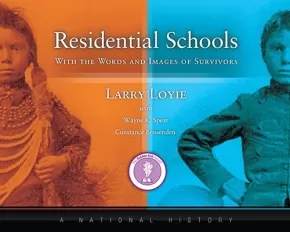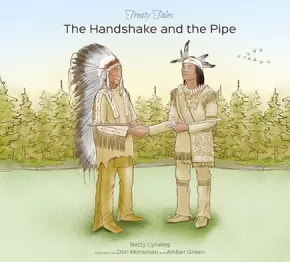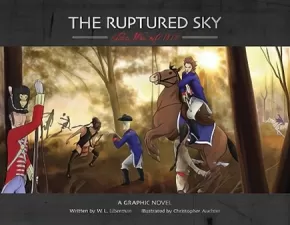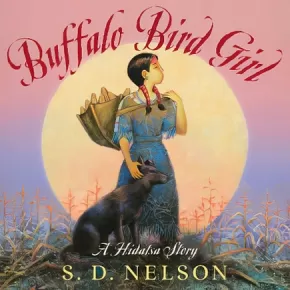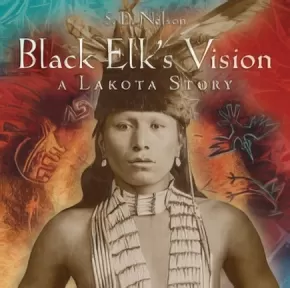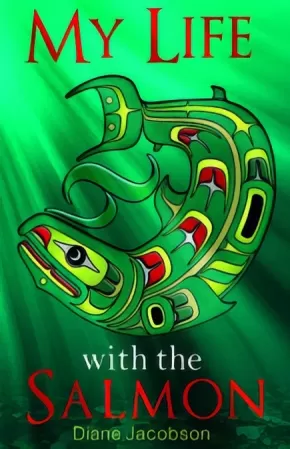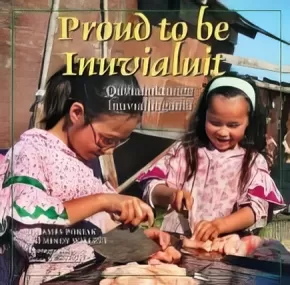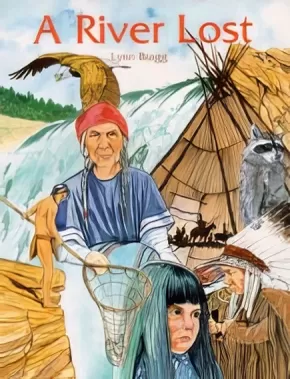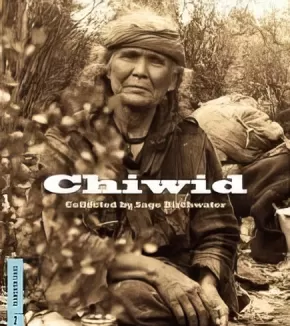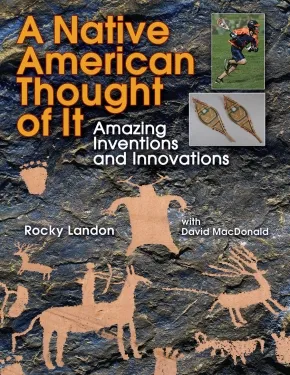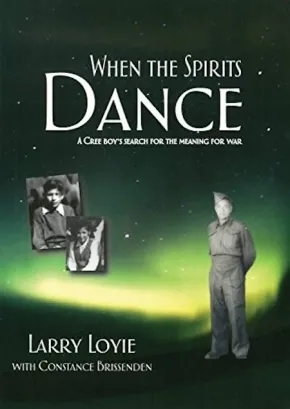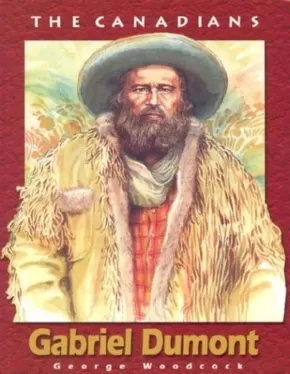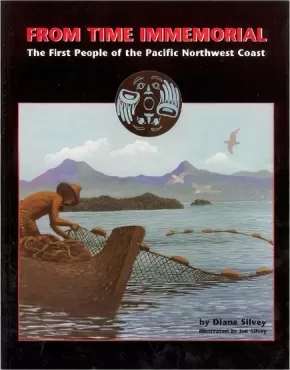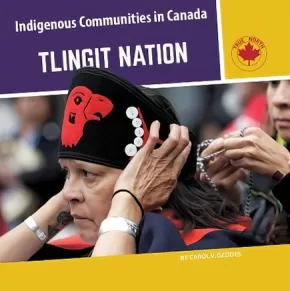
History
181
-
195
of
195 Results;
Sort By
Go To
of 13
Residential Schools, With the Words and Images of Survivors
$34.95
Format:
Hardcover
Text Content Territories:
Indigenous Canadian;
ISBN / Barcode: 9780993937101
Synopsis:
Synopsis:
Residential Schools, With the Words and Images of Survivors, A National History honours the survivors, the former students, who attended residential schools. Designed for the general reader this accessible, 112-page history offers a first-person perspective of the residential school system in Canada, as it shares the memories of more than 70 survivors from across Canada as well as 125 archival and contemporary images (65 black & white photographs, 51 colour, some never before published).
This essential volume written by award-winning author Larry Loyie (Cree), a survivor of St. Bernard Mission residential school in Grouard, AB, and co-authored by Constance Brissenden and Wayne K. Spear (Mohawk), reflects the ongoing commitment of this team to express the truths about residential school experiences and to honour the survivors whose voices are shared in this book.
Along with the voices, readers will be engaged by the evocative, archival photographs provided by the Shingwauk Residential Schools Centre with the assistance of curator Krista McCracken. The book begins with the moving introduction by Larry Loyie, and moves to seven chapters that explore the purpose of this school system; cultures and traditions; leaving home; life at school the half-day system; the dark side of the schools; friendship and laughter coping with a new life; changing world–the healing begins; and an afterword. A detailed, full colour map showing residential schools, timeline with key dates, glossary, and a helpful index (including names of survivors and schools) make this vital resource a must-have for secondary, college, and universities, libraries, and the general reader.
Reviews
"A broad and comprehensive review of the history of First Nations, Métis, and Inuit peoples in Canada told from the perspective of First Peoples in a very accessible way. Any educator, regardless of personal background or heritage, would find this timely resource very useful in any classroom." — Gary Fenn and Domenic Bellissimo, executive assistants, Ontario Secondary School Teachers’ Federation
"Written with a gentle hand, this book describes a history that few Canadians understand or even know about. From the first page, those in search of the truth are engaged in a journey of learning, as they come to understand the true battle of Aboriginal peoples to preserve their cultures and pride. This story is a true account of resiliency and human spirit." — Tracy Zweifel, executive director, Sagitawa Friendship Society, Alberta
Awards
- 2016 Winner of Golden Oak award in Ontario's Forest of Reading program
Educator Information
This must-have resource includes a detailed, full-colour map showing residential schools, a timeline with key dates, and a glossary.
Recommended for grades 7-12, but would still be useful for adults and college/university courses studying residential schools and Indigenous history.
This book has been evaluated and approved by ERAC (Educational Resource Acquisition Consortium, British Columbia).
Additional Information
112 pages | 10.43" x 8.26"
Treaty Tales: The Handshake and the Pipe
$19.95
Artists:
Format:
Hardcover
Text Content Territories:
Indigenous Canadian; First Nations;
ISBN / Barcode: 9781927849057
Synopsis:
Synopsis:
This beautiful children’s book is the first of instalment of Treaty Tales, an original trilogy that makes learning about the treaties and their history fun and engaging.
Journey with Neepin and her kookoo around their home reserve of Lynx Creek First Nation. Learn the story of their people and the importance of respect and honouring agreements.
Educator & Series Information
This resource is part of the Treaty Tales series.
This resource is also available in French: La poignée de main et le calumet
Ruptured Sky: The War of 1812
$30.00
Artists:
Format:
Paperback
Text Content Territories:
Indigenous American; Indigenous Canadian;
ISBN / Barcode: 9780132804738
Synopsis:
Synopsis:
The Ruptured Sky explores the War of 1812 from First Nations perspectives. Without their involvement, the borders of Canada and America might have been vastly different.
Without their First Nations allies, British troops and Canadian militia would not have win key battles and the U.S./Canada border might not exist. Canada might not have become an independent nation. First Nations peoples remained conflicted about whom to support since longstanding allegiances existed with both the British and Americans. This became a divisive issue. Individuals such as Tecumseh, John Norton, Joseph Brant, and others played major roles in the war's outcome. First Nations peoples fought with outstanding bravery, great ferocity, and remarkable skill. This book tells a little-known story of their remarkable contributions to Canadian victories in the War of 1812--and of how they were treated at the war's end.
Additional Information
62 pages
Buffalo Bird Girl: A Hidatsa Story
$28.99
Artists:
Format:
Hardcover
Text Content Territories:
Indigenous American; Native American; Three Affiliated Tribes; Hidatsa;
ISBN / Barcode: 9781419703553
Synopsis:
Synopsis:
"I was born in an earth lodge by the mouth of the Knife River, in what is now North Dakota, three years after the smallpox winter." - Buffalo Bird Woman
Born in the 1830s, Buffalo Bird Girl was a member of the Hidatsa people, a Native American community that lived in permanent villages along the Missouri River on the Great Plains. Like other girls her age, Buffalo Bird Girl learned the ways of her people through watching, listening and then doing. She helped plant crops in the spring, tended the fields through the summer - scaring off birds and other animals, as well as hungry boys! - and in autumn joined in the harvest. She also learned to prepare animal skins, dry meat and perform other household duties. Along with her chores, however, there was time for playing games with friends or training her dog. Her family also visited the nearby trading post, where all sorts of magnificent things from the white man's settlements in the East could be seen.
Interweaving the actual words and stories of Buffalo Bird Woman with his artwork and archival photographs, award-winning author and artist S.D. Nelson has woven a poignant yet vibrant story, beautifully capturing the spirit of Buffalo Bird Girl and her lost way of life. The book includes a historical timeline.
Reviews
"The extraordinary illustration of this handsome volume begins with the endpaper maps and features acrylic paintings of the Hidatsa world reminiscent of traditional Plains Indian art. Pencil drawings and relevant, carefully labeled photographs round out the exquisite design. All the artwork both supports and adds to the text. An extensive author’s note and timeline supplement this beautiful tribute." —Kirkus Reviews, starred review
"Nelson's quiet, respectful tone capably balances the factual details of daily life in the Hidatsa tribe with the obvious joy and nostalgia Buffalo Bird Girl feels toward her childhood." —The Bulletin of the Center for Children's Books
"As a writer, storyteller, and traditional artist of the Sioux people, his perspective is genuine and effectively portrayed. This book would be enjoyable for anyone interested in history, but would also be an effective resource in the classroom to support the curriculum.”—Library Media Connection
"Nelson's acrylic paintings and b&w pencil drawings are intriguingly interlaced with the photographs, contrasting Native American figures in blunt profile with harvest colors and background textures that mimic dried spears of grass, leather skins, and basket weaves." — Publishers Weekly"
Educator Information
This fascinating picture book biography tells the childhood story of Buffalo Bird Woman. Through her true story, readers will learn what it was like to be part of this Native American community that lived along the Missouri River in the Dakotas, a society that depended more on agriculture for food and survival than on hunting. Children will relate to Buffalo Bird Girl’s routine of chores and playing with friends, and they will also be captivated by her lifestyle and the dangers that came with it.
Recommended Ages: 6-10
Additional Information
56 pages | 10.50" x 10.25"
Black Elk's Vision: A Lakota Story
$27.95
Artists:
Format:
Hardcover
Text Content Territories:
Indigenous American; Native American; Sioux; Lakota; Oglala Lakota;
ISBN / Barcode: 9780810983991
Synopsis:
Synopsis:
Told from the Native American point of view, Black Elk’s Vision provides a unique perspective on American history. From recounting the visions Black Elk had as a young boy, to his involvement in the battles of Little Big Horn and Wounded Knee, as well as his journeys to New York City and Europe with Buffalo Bill’s Wild West Show, this biographical account of Black Elk—an Oglala-Lakota medicine man (1863–1950)—follows him from childhood through adulthood.
S. D. Nelson tells the story of Black Elk through the medicine man’s voice, bringing to life what it was like to be Native American in the mid-to-late nineteenth century and early twentieth century. The Native people found their land overrun by the Wha-shi-choos, or White Man, the buffalo slaughtered for sport and to purposely eliminate their main food source, and their people gathered onto reservations. Through it all, Black Elk clung to his childhood visions that planted the seeds to help his people—and all people—understand their place in the circle of life. The book includes archival images, a timeline, a bibliography, an index, and Nelson’s signature art.
Reviews
“A fine choice for story hours, this will also find wide curricular use.” —Booklist
“A modern-day story in the Sioux tradition of storytelling.” —Winston-Salem Journal
“Splendid acrylic artwork captures the action, humor, and spirit of the tale. A solid addition to collections of Native American tales and an enjoyable read-aloud.” —School Library Journal
“Nelson pulls it off with his confident style as a storyteller . . . polished illustrations . . . informative, well written.” —Kirkus Reviews
Educator Information
F&P level: U
F&P genre: B
Additional Information
48 pages | 10.50" x 10.37"
My Life with the Salmon (1 in stock, Out of Print)
$18.95
Format:
Paperback
Text Content Territories:
Indigenous Canadian; First Nations; Kwakwaka'wakw (Kwakiutl); Namgis;
ISBN / Barcode: 9781894778886
Synopsis:
Synopsis:
Diane “Honey” Jacobson’s latest book is an important comment about First Nations efforts to save the salmon and her personal youthful journey to find meaning and a sense of place in life. Like the style in her first book My Life in a Kwagu’l Big House, Diane’s style in My Life with the Salmon is full of action, amazing adventures and fascinating connections between land, water and people. In My Life with the Salmon, we follow “Honey” through sometimes hilarious and sometimes difficult periods but we always learn a life lesson.
Awards
- 2012 Winner of the Independent Publisher Book Awards
Additional Information
176 pages | 5.50" x 8.47"
Proud to Be Inuvialuit: Quviahuktunga Inuvialuugama
$19.95
Artists:
Format:
Hardcover
Text Content Territories:
Indigenous Canadian; Inuit; Inuvialuit (Mackenzie Inuit);
ISBN / Barcode: 9781897252598
Synopsis:
Synopsis:
James Pokiak is proud to be Inuvialuit, which means "real people."
The Inuvialuit are the most westerly Canadian Inuit. James lives in the hamlet of Tuktoyuktuk, NWT, which is above the Arctic Circle on the shore of the Arctic Ocean. The community is often just called Tuk to save time. Even though he lives in town now, James grew up on the land, learning the traditional values and survival skills of his people.
In this book, the fifth in the The Land is Our Storybook series, James and his daughter, Rebecca, go on a trip to harvest beluga whale. Harvesting and preparing beluga meat together as a family is an integral part of what it means to be Inuvialuit. Join James and Rebecca and learn about how the beluga whale is interlinked with Inuvialuit culture and history.
Educator & Series Information
Recommended Ages: 8-12
This is the fifth book in the The Land Is Our Storybook Series, a first-ever series of books for children about the diverse lands and cultures of Canada's Northwest Territories.
Additional Information
32 pages | 8.33" x 8.25"
A River Lost
$11.95
Artists:
Format:
Paperback
Text Content Territories:
Indigenous American; Native American; Sinixt (Arrow Lakes);
ISBN / Barcode: 9780888393838
Synopsis:
Synopsis:
A River Lost is the familiar story of an ancient culture infringed upon and altered forever by modern technology. It is the story of how the construction of the Grand Coulee Dam led to the destruction of a way of life for members of the Arrow Lakes Tribe. Sinee mat and her great-grandmother Toopa tell the engaging story of life on the Columbia River, before and after the dam.
Additional Information
32 pages | 8.50" x 11.00"
Chiwid
$19.00
Format:
Paperback
Text Content Territories:
Indigenous Canadian; First Nations; Dene; Tsilhqot'in (Chilcotin);
ISBN / Barcode: 9780921586395
Synopsis:
Synopsis:
Chiwid was a Tsilhqot'in woman, said to have shamanistic powers, who spent most of her adult life "living out" in the hills and forests around Williams Lake, BC. Chiwid is the story of this remarkable woman told in the vibrant voices of Chilcotin oldtimers, both native and non-native.
Reviews
"Chiwid was a Chilcotin woman who lived outside, self-sufficiently for most of her life and moving camps with the seasons. Chiwid is a collection of oral histories about the woman, her family and what life was like in the Chilcotin area of British Columbia in the early to mid-1900s." - The Association of Book Publishers of BC. BC Books for BC Schools. 2009-2010.
Additional Information
128 pages | 8.00" x 9.00"
Authenticity Note: This book's author is not Indigenous; however, the book has the Authentic Indigenous Text label because it contains stories collected by the author from Indigenous and non-Indigenous peoples. It is up to readers to determine if this book will work as an authentic text for their purposes.
A Native American Thought of It: Amazing Inventions and Innovations
$9.95
Format:
Paperback
Text Content Territories:
Indigenous American; Indigenous Canadian;
ISBN / Barcode: 9781554511549
Synopsis:
Synopsis:
Inventiveness and ingenuity from North America's First Nations.
Everyone knows that moccasins, canoes and toboggans were invented by the Aboriginal people of North America, but did you know that they also developed their own sign language, as well as syringe needles and a secret ingredient in soda pop?
Depending on where they lived, Aboriginal communities relied on their ingenuity to harness the resources available to them. Some groups, such as the Iroquois, were particularly skilled at growing and harvesting food. From them, we get corn and wild rice, as well as maple syrup.
Other groups, including the Sioux and Comanche of the plains, were exceptional hunters. Camouflage, fish hooks and decoys were all developed to make the task of catching animals easier. And even games-lacrosse, hockey and volleyball -- have Native American roots.
Other clever inventions and innovations include:
* Diapers
* Asphalt
* Megaphones
* Hair conditioner
* Surgical knives
* Sunscreen.
With descriptive photos and information-packed text, this book explores eight different categories in which the creativity of First Nations peoples from across the continent led to remarkable inventions and innovations, many of which are still in use today.
Educator & Series Information
This book is a part of the We Thought of It series, a series which takes readers on a fascinating journey across the world's second largest continent to discover how aspects of its culture have spread around the globe.
Additional Information
48 pages | 8.50" x 11.00"
The Inuit Thought of It: Amazing Arctic Innovations
$9.95
Format:
Paperback
Text Content Territories:
Indigenous Canadian; Inuit;
ISBN / Barcode: 9781554510870
Synopsis:
Synopsis:
Dazzling inventions from the far north.
Today's Arctic communities have all the comforts of modern living. Yet the Inuit survived in this harsh landscape for hundreds of years with nothing but the land and their own ingenuity. Join authors Alootook Ipellie and David MacDonald as they explore the amazing innovations of traditional Inuit and how their ideas continue to echo around the world.
Some inventions are still familiar to us: the one-person watercraft known as a kayak retains its Inuit name. Other innovations have been replaced by modern technology: slitted snow goggles protected Inuit eyes long before sunglasses arrived on the scene. And other ideas were surprisingly inspired: using human-shaped stone stacks (lnunnguat) to trick and trap caribou.
Many more Inuit innovations are explored here, including:
- Dog sleds
- Kids' stuff
- Shelter
- Food preservation
- Clothing
- Medicine.
In all, more than 40 Inuit items and ideas are showcased through dramatic photos and captivating language. From how these objects were made, to their impact on contemporary culture, The Inuit Thought of It is a remarkable catalog of Inuit invention.
Educator & Series Information
Recommended Ages: 10-12.
B.C. Science Supplementary Resource: Gr.3- Physical Science
B.C. Science Supplementary Resource Gr.4- Life Science
This book is a part of the We Thought of It series, a series which takes readers on a fascinating journey across the world's second largest continent to discover how aspects of its culture have spread around the globe.
Additional Information
32 pages | 8.50" x 11.00"
When The Spirits Dance
$16.95
Format:
Paperback
Text Content Territories:
Indigenous Canadian; First Nations; Cree (Nehiyawak);
ISBN / Barcode: 9781926886022
Synopsis:
Synopsis:
When Lawrence's father goes overseas with the Canadian Army during the Second World War, the young Cree boy struggles to grow up while wrestling with the meaning of war. With Papa gone, Mama raises the children alone. Traditional foods like wild meat and fish are scarce and many other foods are rationed. Angry about the changes and confused about the future, Lawrence misses his father and his teachings about their natural way of life. When army runaways threaten the family, Lawrence's courage and knowledge of traditional skills are called upon to keep them safe. With guidance from his grandfather and encouragement from his grandmother, Lawrence faces his challenges, becoming wiser and stronger, and earning the respect of his elders.
Educator & Series Information
Recommended for grades 4 to 9.
This book is part of The Lawrence Series.
Additional Information
44 pages | 7.75" x 10.54"
Gabriel Dumont (2 In Stock) - ON SALE
$10.36 $12.95
Format:
Paperback
Text Content Territories:
Indigenous Canadian; Métis;
ISBN / Barcode: 9781550414929
Synopsis:
Synopsis:
Born in St. Boniface in 1837 of French and Indian parentage, Gabriel Dumont's childhood was spent in the Saskatchewan country, where he grew accustomed to the semi-nomadic existence of the Métis. These were the proud days of the Métis nation, when its people roamed freely throughout the Prairies. The most stable social institution was the annual buffalo hunt with its rules. When Gabriel Dumont became head of the Great Saskatchewan Hunt in 1862 the end of the nomadic lifestyle was already in sight.
As the buffalo herds dwindled, the Métis began to form more permanent settlements, but were alarmed when their pleas for recognition of their land rights were ignored by Sir John A Macdonald's government. Dumont appealed to Louis Riel, leader of the Red River Rebellion.
Riel spoke up for the Saskatchewan Métis, but their petitions were ignored. In 1885, the Métis took up arms against the government forces. Dumont spurred the outnumbered rebels to several victories. After the Métis defeat, Dumont fled to the United States where he spent time with Buffalo Bill's Wild West Show until an amnesty was declared and he was able to return to his home.
Educator & Series Information
This book is part of The Canadians Series.
Recommended Ages: 10-13
Additional Information
64 pages | 6.50" x 8.50"
From Time Immemorial: The First Peoples of the Northwest Coast (5 in Stock)
$29.95
Artists:
Format:
Paperback
Text Content Territories:
Indigenous Canadian; First Nations;
ISBN / Barcode: n/a
Synopsis:
Synopsis:
From Time Immemorial provides an honest and up-to-date survey of the history of the coastal First Nations from pre-contact to the present. The culture of the coastal people was highly complex. Although there were many similarities, there were also many differences among the groups who shared the wealth of their life-sustaining environment.
This book provides a broad overview of traditional ways common to a large number of diverse groups. It encourages readers to learn more about particular groups who, long ago, walked the shorelines and forest trails of the Pacific Northwest.
Educator Information
From Time Immemorial has been recommended by the First Nations Education Steering Committee of BC as an “authentic First Peoples text that meets provincial standards and reflects First Peoples knowledge and perspectives in a respective way.”
It has also been recommended by Literacy BC: “It’s easy to see why this text, which is accessible for fundamental level students, was also awarded the British Columbia 2000 Book Award.” Jan Weiten notes, “[This] is such an ambitious project. Both Diane and Joe Silvey have honoured the spirit and history of First Nations people, and they should be proud of themselves. This is definitely an asset to any classroom.”
From Time Immemorial meets or exceeds all of the Learning Standards for the new BC Grade 3 Social Studies curriculum and the First Nations content for grades 4-8:
- Learning about indigenous peoples nurtures multicultural awareness and respect for diversity
- People from diverse cultures and societies share some common experiences and aspects of life.
- Indigenous knowledge is passed down through oral history, traditions, and collective memory.
- Indigenous societies throughout the world value the well-being of the self, the land, spirits, and ancestors.
Recommended Grades: 3-8.
A teacher's guide for this book was available, but is now out of print: From Time Immemorial Teacher's Guide
This resource is also available in French: De Temps Immemorial: Les Premiers Habitants de la Côte Nord-Ouest du Pacifique. A French Teacher's Guide is also available here: Guide de la'enseignant(e) De Temps Immemorial.
Additional Information
92 pages | colour illustrations, photos, and maps
Indigenous Communities in Canada: Tlingit Nation
$15.95
Format:
Paperback
Text Content Territories:
Indigenous Canadian; First Nations; Tlingit;
ISBN / Barcode: 9781773086408
Synopsis:
Synopsis:
A book about the Tlingit Nation.
Educator & Series Information
This book is part of the Indigenous Communities in Canada series.
Additional Information
24 Pages
Sort By
Go To
of 13

